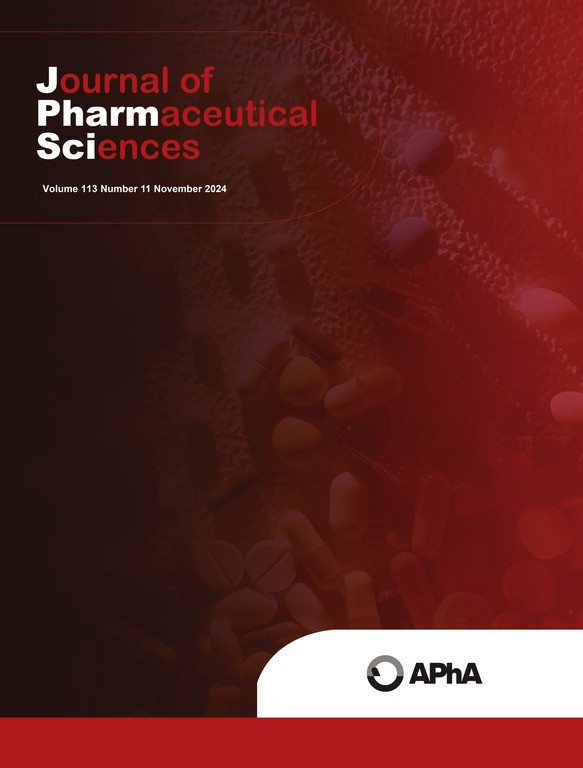从微观崩塌、控制冰核和蛋白质浓度变化揭示冻干蛋糕的孔隙结构变化。
IF 3.7
3区 医学
Q2 CHEMISTRY, MEDICINAL
引用次数: 0
摘要
本研究探讨了x射线显微镜(XRM)作为优化药物制剂冻干循环的先进表征工具的应用。利用无创、高分辨率成像,XRM提供了对冻干蛋糕宏观和微观结构特征的全面了解,揭示了冻干加工的明显差异。较高的初次干燥温度和恶劣的干燥条件会导致微观结构的改变,包括裂缝和微崩塌,而保守的干燥方法会导致更均匀的结构。控制冰核(CIN)过程通过形成广泛的大孔区显著提高升华速率。通过XRM校准强度分析检测固体含量的变化,高分辨率成像突出了样品之间细微的微观结构差异,有助于更深入地了解蛋糕的性质。XRM获得的表面积测量结果显示与常规BET分析有很强的相关性,验证了其定量准确性。此外,从XRM数据得出的模拟扩散系数与热电偶测量的干层电阻值具有良好的相关性,强调了其在评估质量传递行为方面的实用性。XRM的非破坏性和详细成像能力使其成为现有表征技术的有价值的补充工具,实现更有效的循环开发和优化。本文章由计算机程序翻译,如有差异,请以英文原文为准。
Revealing the pore structure variance of lyophilized cakes from microcollapse, controlled ice nucleation, and protein concentration changes
This study investigates the application of X-ray microscopy (XRM) as an advanced characterization tool for optimizing lyophilization cycles in pharmaceutical formulations. Utilizing non-invasive, high-resolution imaging, XRM provided comprehensive insights into the macro- and microstructural features of lyophilized cakes, revealing distinct differences attributable to lyophilization processing. High primary drying temperatures and aggressive conditions led to microstructural alterations, including fractures and microcollapse, while conservative drying methods resulted in more uniform and homogeneous structure. The controlled ice nucleation (CIN) process notably enhanced sublimation rates by forming extensive macroporous zones. Calibrated intensity analysis via XRM detected variations in solid content, and high-resolution imaging highlighted subtle microstructural differences among samples, contributing to a deeper understanding of cake properties. Surface area measurements obtained from XRM showed a strong correlation with conventional BET analysis, validating its quantitative accuracy. Additionally, simulated diffusivity derived from XRM data correlated well with dry layer resistance values from thermocouple measurements, underscoring its utility in evaluating mass transport behaviors. XRM's non-destructive nature and detailed imaging capabilities make it a valuable complementary tool to existing characterization techniques, enabling more efficient cycle development and optimization.
求助全文
通过发布文献求助,成功后即可免费获取论文全文。
去求助
来源期刊
CiteScore
7.30
自引率
13.20%
发文量
367
审稿时长
33 days
期刊介绍:
The Journal of Pharmaceutical Sciences will publish original research papers, original research notes, invited topical reviews (including Minireviews), and editorial commentary and news. The area of focus shall be concepts in basic pharmaceutical science and such topics as chemical processing of pharmaceuticals, including crystallization, lyophilization, chemical stability of drugs, pharmacokinetics, biopharmaceutics, pharmacodynamics, pro-drug developments, metabolic disposition of bioactive agents, dosage form design, protein-peptide chemistry and biotechnology specifically as these relate to pharmaceutical technology, and targeted drug delivery.

 求助内容:
求助内容: 应助结果提醒方式:
应助结果提醒方式:


